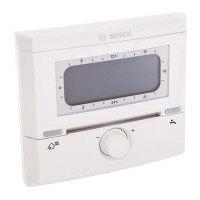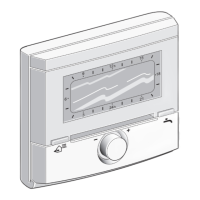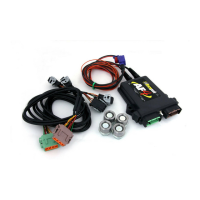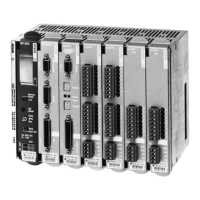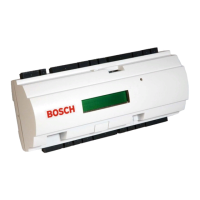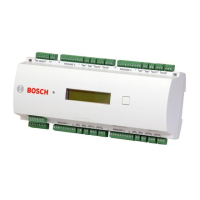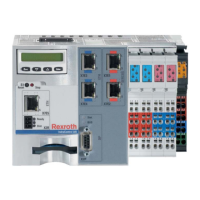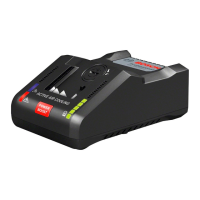26
|
FHP560 Controller Applications Manual
Bosch Thermotechnology Corp.
Data subject to change Page____ of ____
12 Water-To-Air Sequence Of Operation
1. Unit Start-Up
Program will check schedule status for either occupied or unoccupied mode to determine setpoint range. Different run conditions may
determine the occupancy mode.
Run Conditions: the heat pump may have external or internal control sources to determine occupancy and initiate heating or cooling.
External Control Sources:
a. Digital Input - a contact closure (in IN-1 or IN-2) is used to enable unit operation. Once enabled, unit will run until set-point is satisfi ed, or
10 minutes has elapsed since contacts opened.
b. BAS - a network point is used to command the unit into occupied or unoccupied mode. Software may be confi gured to keep unit
operational when network connection is lost.
c. Manual On - the heat pump is placed in continuous occupied mode and will operate until setpoint is satisfi ed. Software may be confi gured
to manually place the unit in unoccupied mode.
d. Override - for units with ZS wall-mounted sensors, unit operation may be overridden into occupied mode using a push button on the
sensor. Software may be confi gured to disallow sensor override from the space. Time for override is in increments of 30 mins, with a max
of 3 hours allowed.
Internal Control Sources:
a. Local Schedule - the internal scheduler uses the local time and user-defi ned schedule to determine occupancy. Default schedule is:
MON - FRI 8:00AM - 5:00PM OCCUPIED MODE
SAT 7:00AM - 3:00PM OCCUPIED MODE
SUN 10:00AM - 1:00PM OCCUPIED MODE
Unit is in unoccupied mode outside the above stated hours.
Default occupied schedule setpoints:
74°F cooling setpoint (adjustable)
70°F heating setpoint (adjustable)
Default unoccupied schedule setpoints:
90°F cooling setpoint (adjustable)
55°F heating setpoint (adjustable)
The internal schedule may only be modifi ed using a BACview interface.
2. Temperature Source Selection
The program will check for a valid source of temperature to control the unit. The software may be confi gured for the following three (3)
available sources: ZS sensor (default), Remote sensor, BAS sensor.
a. ZS Sensor - the program will check for a valid 4-wire communicating ZS sensor at the Rnet port of the controller during the fi rst 30 secs
after start-up. If a valid sensor is not detected the unit will remain nonoperational in its default unoccupied state, an alarm is generated, and
the program defaults to -60°F for the zone temperature.
b. Remote Sensor - the program will check for a valid 2-wire, 10k-ohm @ 77°F thermistor type sensor at IN-2 of the controller during the
fi rst 30 secs after start-up. If a valid sensor is not detected the unit will remain nonoperational in its default unoccupied state, an alarm is
generated, and the program defaults to -60°F for the zone temperature.
c. BAS Sensor - the program will check for a network value pushed from the Building Automation System (BAS) to control the unit. If no value
is written to the network point the program defaults to 74°F, otherwise the last reported temperature value is used to control the unit. Refer
to the Integration Points List for network points.
3. Setpoint Management
The registered zone temperature will be checked against the current setpoint range (Default: 70°F - 74°F occupied, 55°F - 90°F unoccupied).
Manual offsets in the software or temperature adjustments from the ZS sensor will be taken into account when determining the actual
(effective) setpoint range; for example, if the setpoint is increased in the space by +2°F, then the occupied setpoint range becomes 72°F -
76°F, and if the setpoint is decreased in the space by -2°F, then the occupied setpoint range becomes 68°F - 72°F. Adjustment limits may be
used to manage the allowed setpoint changes from the wall sensor (default limit is +/- 3°F)
Upon a transition from occupied to unoccupied mode all setpoint adjustments are removed and reset to 0°F.
The software may also be confi gured to disable the ability to change setpoints in the space.
4. Heating / Cooling Operation
The setpoints are compared to the effective zone temperature from the selected source. Demand, based on a PID algorithm, is used to
determine when to energize the unit in either heating or cooling mode. The PID algorithm calculates the demand value as a percentage (%)
based on the difference between the zone temperature and the heat/cool setpoints.
Supply Fan - The supply fan will be started according to the schedule and is confi gured for continuous operation during the occupied mode.
The program may be confi gured to interlock fan operation with heating or cooling operations (Auto mode). For this confi guration the fan will
be started if the PID demand for heating or cooling is greater than 10%, and stopped when the demand falls below 5%.
After the supply fan has been started the control sequence will be enabled.
Compressors - the 1st stage of compressor operation (heating or cooling) is enabled at 30% PID demand, and disabled at 20% PID demand.
Once enabled the compressor will cycle to maintain the zone temperature at setpoint unless commanded off by a safety condition (E.G.
smoke alarm, high/low leaving water temperature, etc.) or unit option (E.G. economizer, boileress, loop valve, etc.). The reversing valve is
indexed on during cooling and indexed off during heating.
The stage 1 compressor will have a minimum off time of 3 minutes, and a minimum on time of 7 minutes.
The second stage of compressor operation (heating or cooling) is enabled at 60% PID demand, and disabled at 40% PID demand. In addition,
stage 2 compressor operation is only enabled after compressor stage 1 has been running for 7 minutes.
Once enabled the compressor will cycle to maintain the zone temperature at setpoint unless commanded off by a safety condition (E.G.
smoke alarm, high/low leaving water temperature, etc.) or unit option (E.G. economizer, boileress, loop valve, etc.).
To prevent short-cycling, the stage 2 compressor has a minimum off time of 5 minutes and no minimum on time.
There’ll be a 1-minute delay when transitioning between heat and cool modes. The compressor will run subject to internal safeties and
controls provided by the UPM. The compressors will not run if the fan is not operational.
A networked “loop valve enable” point must be enabled to allow compressor operation. This point is defaulted “on” from factory.
When the zone is satisfi ed, the PID demand percentage will begin to decrease. Once demand falls below the thresholds described (20% for
stage 1, 40% for stage 2) the compressors will be disabled. In addition, compressor stage 1 will be disabled 10 seconds after compressor
stage 2 is disabled.
Night Setback - when in “unoccupied”, the compressors will cycle as necessary to maintain the night setback zone temperature at setpoint. A
differential prevents the unit from cycling excessively. During unoccupied operation the fan will only cycle to maintain a heat or cool setpoint.
5. Unit Shutdown/Lockout:
When the system is shutdown by a smoke alert or emergency shutdown (network point) the unit will be set as follows:
Supply fan will be off
Reversing valve will be de-energized (off)
Compressor(s) will be off
HGRH valve will be de-energized
When the system is locked out by a stop command or UPM safety condition, the unit will be set as follows:
Supply fan will be on (configurable)
Reversing valve will be de-energized (off)
Compressor(s) will be off
HGRH valve will be de-energized
The following system conditions will result in a stop command and a subsequent unit lockout:
Leaving water temp high condition
Leaving water temp low condition
UPM reset command
Secondary drain pan (high condensate) alarm
Smoke event alarm
Differential pressure switch (DPS) alarm
The following UPM safety conditions result in a unit lockout:
High Pressure condition
Low Pressure condition
Evaporator Coil Freeze condition
Condenser Coil Freeze condition
Brown-out condition
Condensate Overflow condition
The supply fan may be confi gured to turn off (de-energize) when the unit is locked out.
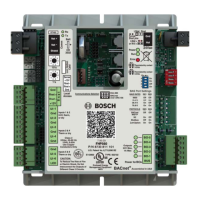
